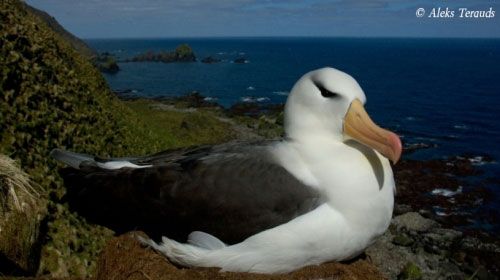Glenn Crossin (Centre for Ecology and Hydrology, Natural Environment Research Council, UK) and colleagues, publishing in the journal General and Comparative Endocrinology, have looked at how carryover effects are mediated in female Black-browed Albatrosses Thalassarche melanophris.
The paper's abstract follows:
"Physiological mechanisms mediating carryover effects, wherein events or activities occurring in one season, habitat, or life-history stage affect important processes in subsequent life-history stages, are largely unknown. The mechanism most commonly invoked to explain carryover effects from migration centres on the acquisition and utilization of resources (e.g. body mass, or individual 'condition'). However, other mechanisms are plausible, e.g. trade-offs reflecting conflict or incompatibility between physiological regulatory systems required for different activities or life-history stages (migration vs. reproduction). Here we show that in female black-browed albatrosses (Thalassarche melanophris) the decision to reproduce or to defer reproduction, made prior to their arrival at breeding colonies after long-distance migration, is associated with condition-related (body mass, hematocrit, hemoglobin concentrations) and hormonal (progesterone, testosterone, estrogen-dependent yolk precursors) traits. In contrast, reproductive success showed little association with condition but showed significant associations with the steroidogenic processes underlying follicle development. Specifically, success was determined by reproductive readiness via differences in steroid hormones and hormone-dependent traits. Successful albatrosses were characterized by high progesterone and high estradiol-dependent yolk precursor levels, whereas failed albatrosses had high testosterone and low yolk precursor levels. Results are discussed with reference to migratory carryover effects and how these can differentially affect the physiologies influencing reproductive decisions and reproductive success."

Reference:
Crossin, G.T., Phillips, R.A., Trathan, P.N., Fox, D.S., Dawson, A., Wynne-Edwards, K.E., & Williams, T.D. 2012. Migratory carryover effects and endocrinological correlates of reproductive decisions and reproductive success in female albatrosses. General and Comparative Endocrinology doi.org/10.1016/j.ygcen.2012.01.006.
John Cooper, ACAP Information Officer, 29 February 2012

 English
English  Français
Français  Español
Español